Chemistry > AQA Question Papers > AS Level Chemistry A H032/02 Depth in chemistry Sample Question Paper (All)
AS Level Chemistry A H032/02 Depth in chemistry Sample Question Paper
Document Content and Description Below
Bromine is a reactive element. It combines with other non-metals to form covalent compounds. Phosphorus tribromide, PBr3, and iodine monobromide, IBr, are examples of covalent compounds used in orga... nic synthesis. (a) PBr3 can be prepared by heating bromine with phosphorus, P4. (i) Write an equation for this reaction. …………………………………………………………………………………………. [1] (ii) How many molecules are present in 1.3535 g of PBr3? number of molecules = ……………………… [3] (iii) The ‘dot-and-cross’ diagram of a molecule of PBr3 is given below. Name the shape of this molecule and explain why the molecule has this shape. name: ……………………………………………………………………………………….. explanation: …………………………………………………………………………………. ………………………………………………………………………………………………. ………………………………………………………………………………………………. [3] Specimen 3 © OCR 2014 H032/02 Turn over (b) Bromine reacts with iodine to form iodine monobromide, IBr. The table below lists some average bond enthalpies which are required in different parts of this question. Bond Average bond enthalpy / kJ mol−1 Br–Br +193 I–I +151 I–Br +175 (i) Average bond enthalpy is the enthalpy change for the breaking of 1 mole of bonds in gaseous molecules. Why do Br2 and I2 not exist in the gaseous state under standard conditions? ………………………………………………………………………………………………. ……………………………………………………………………………………….. [1] (ii) Calculate the enthalpy change of formation, ∆fH, for IBr. ∆fH = ……………………… kJ mol−1 [2] (c) Iodine monobromide, I–Br, is a polar molecule. Heterolytic fission of the I–Br bond forms an electrophile. State the meaning of the term electrophile and suggest the formula of the electrophile formed from IBr. ………………………………………………………………………………………………. ……………………………………………………………………………………….. [2] (d) Bromine disproportionates when it reacts with potassium hydroxide solution. Suggest an equation for this reaction. ……………………………………………………………………………………………… [1] Specimen 4 © OCR 2014 H032/02 BLANK PAGE Specimen 5 © OCR 2014 H032/02 Turn over 2 A large proportion of the world’s output of organic chemicals is used to make addition polymers. These polymers have a variety of uses. (a) Poly(propene) is used to make packaging, textiles and rope. A repeat unit for poly(propene) is shown below. (i) Explain why poly(propene) is a saturated hydrocarbon. ………………………………………………………………………………………………. ………………………………………………………………………………………….. [1] (ii) State the bond angle around each carbon atom in poly(propene). ………………………………………………………………………………………….. [1] (iii) After polymers have been used for packaging, the waste polymers need to be processed to save resources, for example, by recycling. Describe two other ways in which waste poly(propene) can be processed in a sustainable way. ………………………………………………………………………………………………. ………………………………………………………………………………………………. ………………………………………………………………………………………………. …………………………………………………………………………………………. [2] Specimen 6 © OCR 2014 H032/02 (b) Poly(ethenol) is used to make soluble laundry bags. A section of the structure of poly(ethenol) is shown below. (i) Draw a structure to represent one repeat unit of poly(ethenol). [1] (ii) Poly(ethenol) is not manufactured from ethenol. Ethenol is unstable and it forms a more stable structural isomer. Analysis of the structural isomer gave the following data. Infrared spectrum Specimen 7 © OCR 2014 H032/02 Turn over Mass spectrum Use all the data to show that the isomer is not ethenol. Identify the structural isomer of ethenol. In your answer you should make clear how your explanation is linked to the evidence. ………………………………………………………………………………………………. ………………………………………………………………………………………………. ………………………………………………………………………………………………. ………………………………………………………………………………………………. ………………………………………………………………………………………………. ………………………………………………………………………………………….. [4] Specimen 8 © OCR 2014 H032/02 3 Nitrogen can be reacted with hydrogen in the presence of a catalyst to make ammonia in the Haber process. N2(g) + 3H2(g) 2NH3(g) ∆H = −92 kJ mol−1 (a) Describe and explain the effect of increasing the pressure on the rate of this reaction. …………………………………………………………………………………………………… …………………………………………………………………………………………………… ………………………………………………………………………………………… [2] (b) A mixture of N2 and H2 was left to react until it reached equilibrium. The equilibrium mixture had the following composition: N2 1.20 mol dm−3 H2 2.00 mol dm−3 NH3 0.877 mol dm−3 (i) Calculate a value for Kc for this equilibrium. Kc = ………………………………… dm6 mol−2 [ [Show More]
Last updated: 1 year ago
Preview 1 out of 41 pages
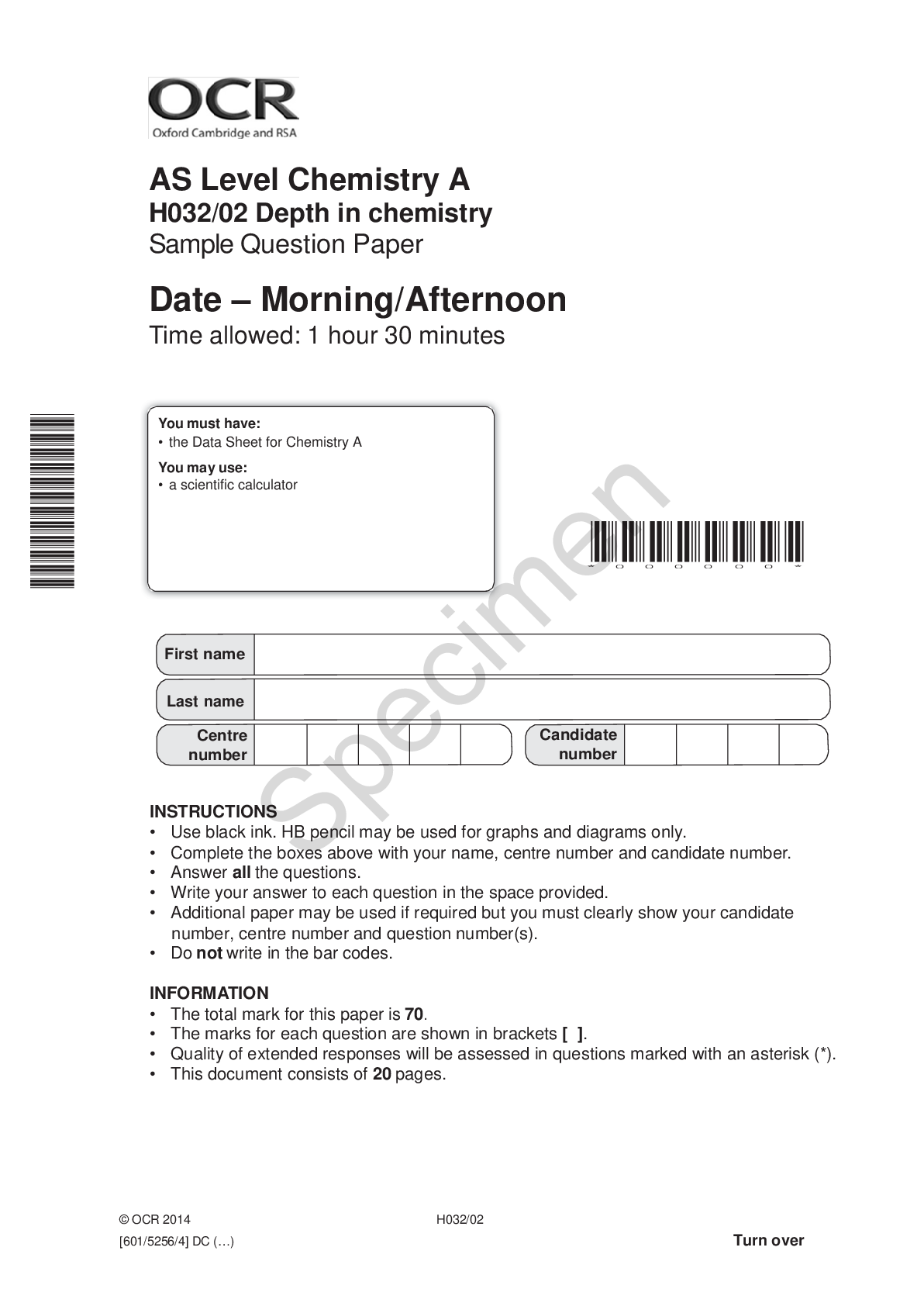
Reviews( 0 )
Document information
Connected school, study & course
About the document
Uploaded On
Jun 26, 2022
Number of pages
41
Written in
Additional information
This document has been written for:
Uploaded
Jun 26, 2022
Downloads
0
Views
37

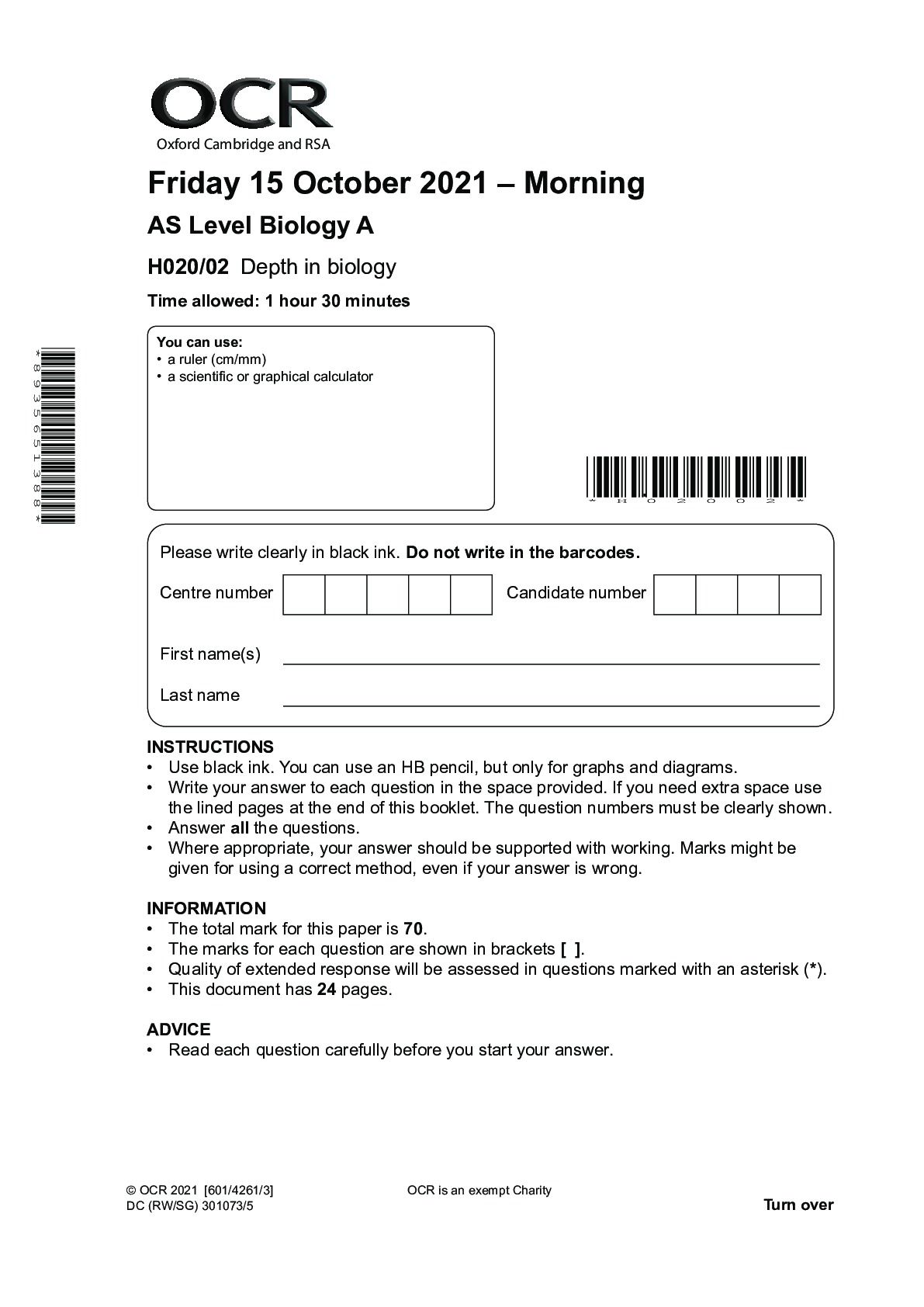

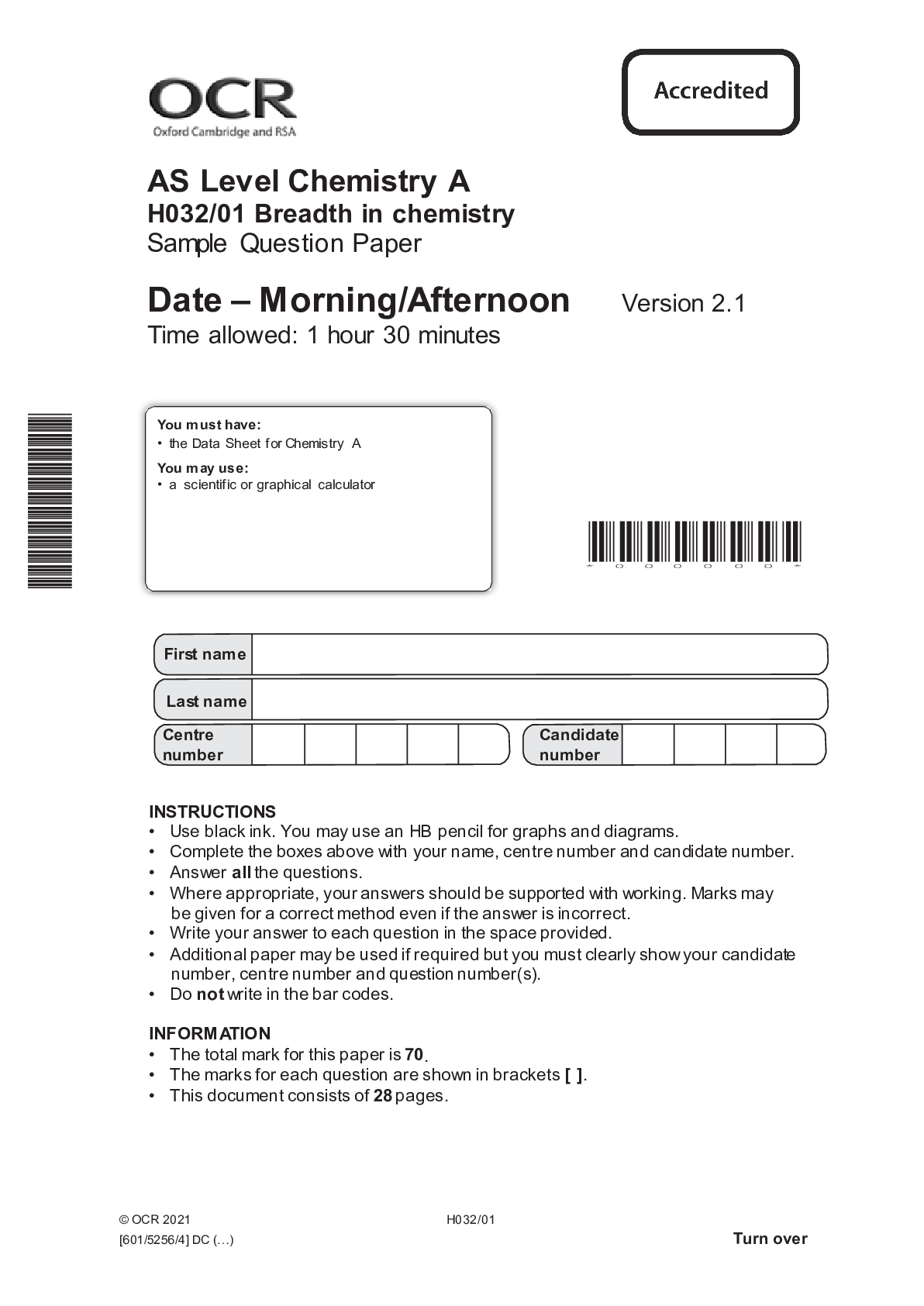
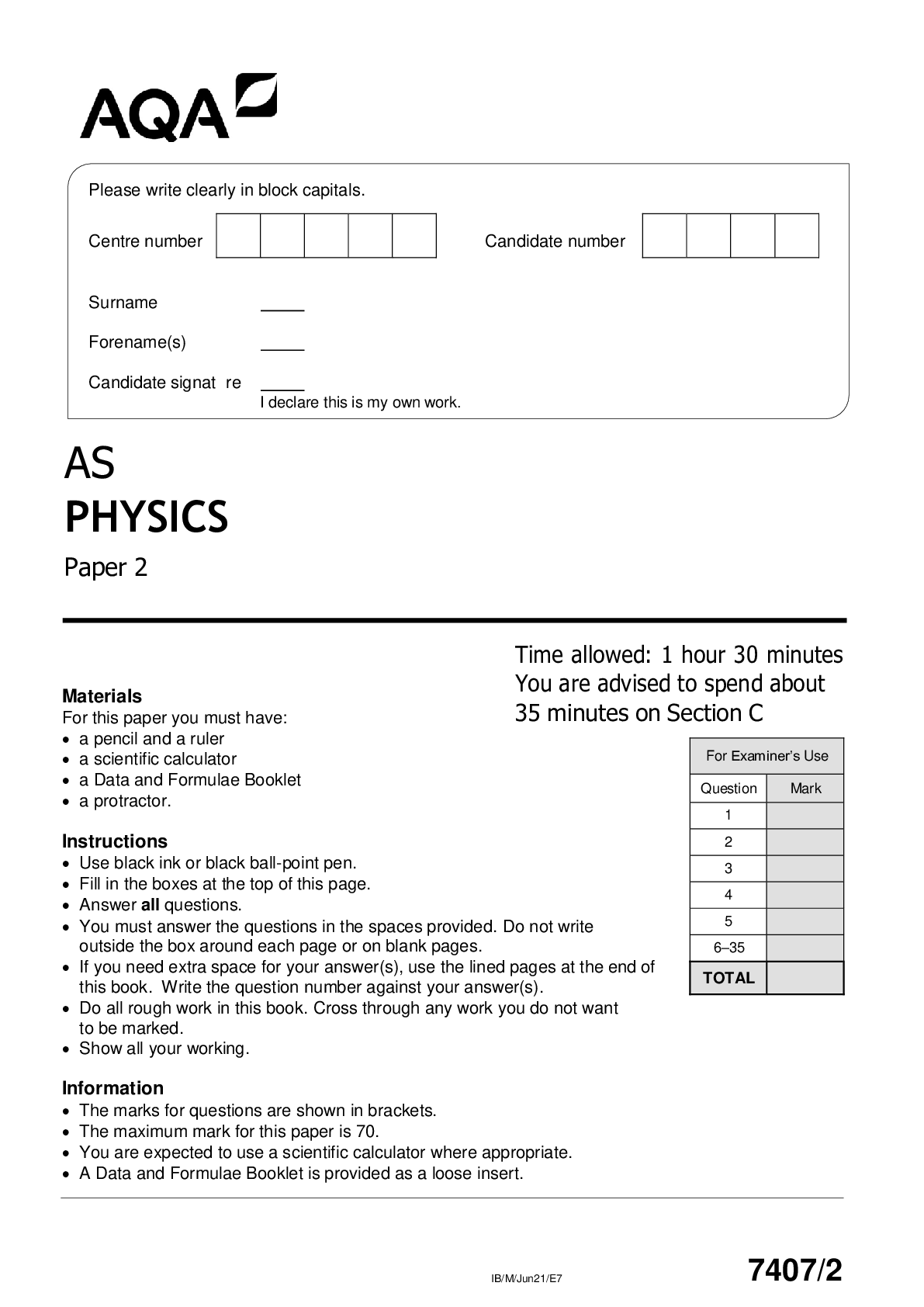
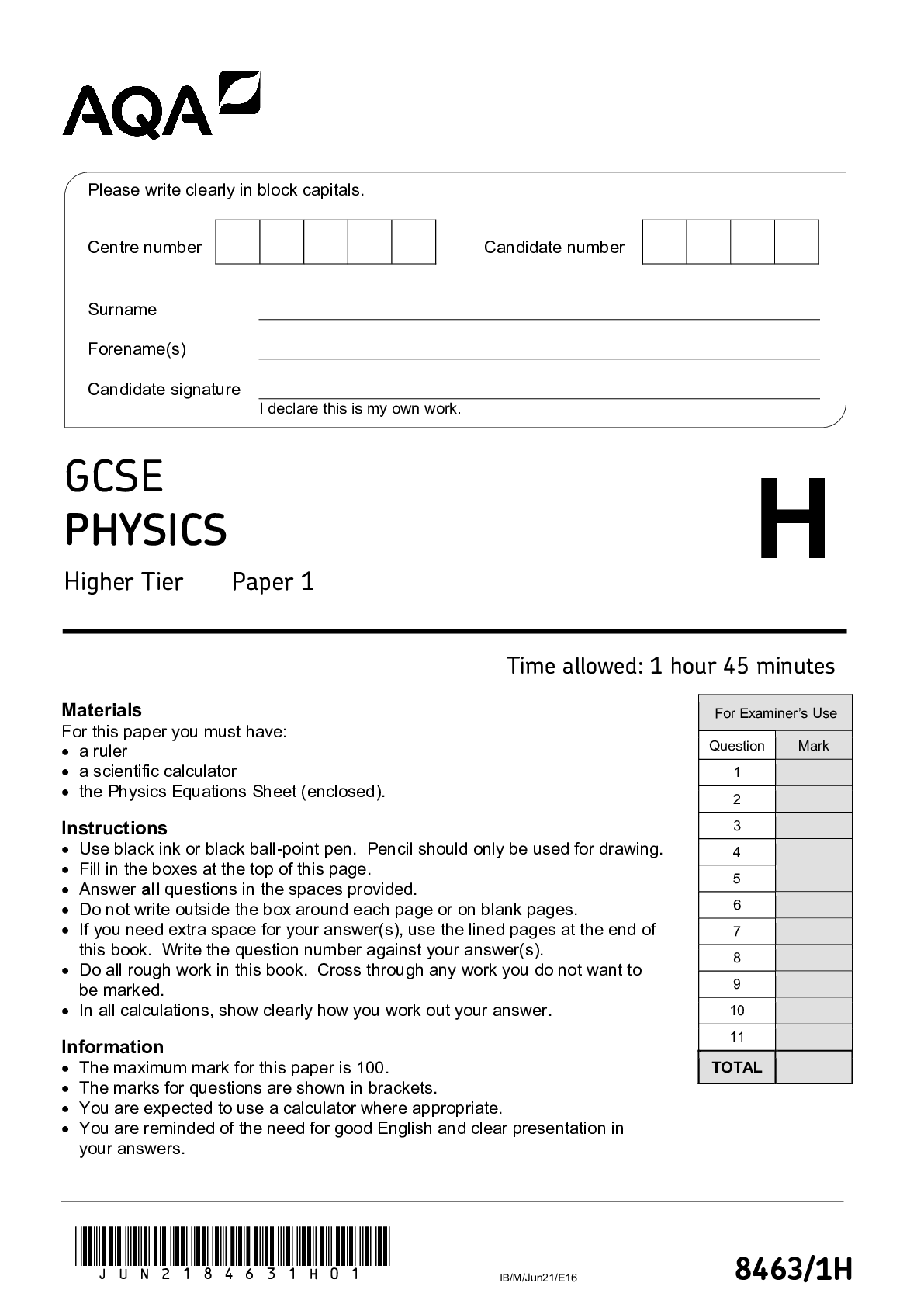
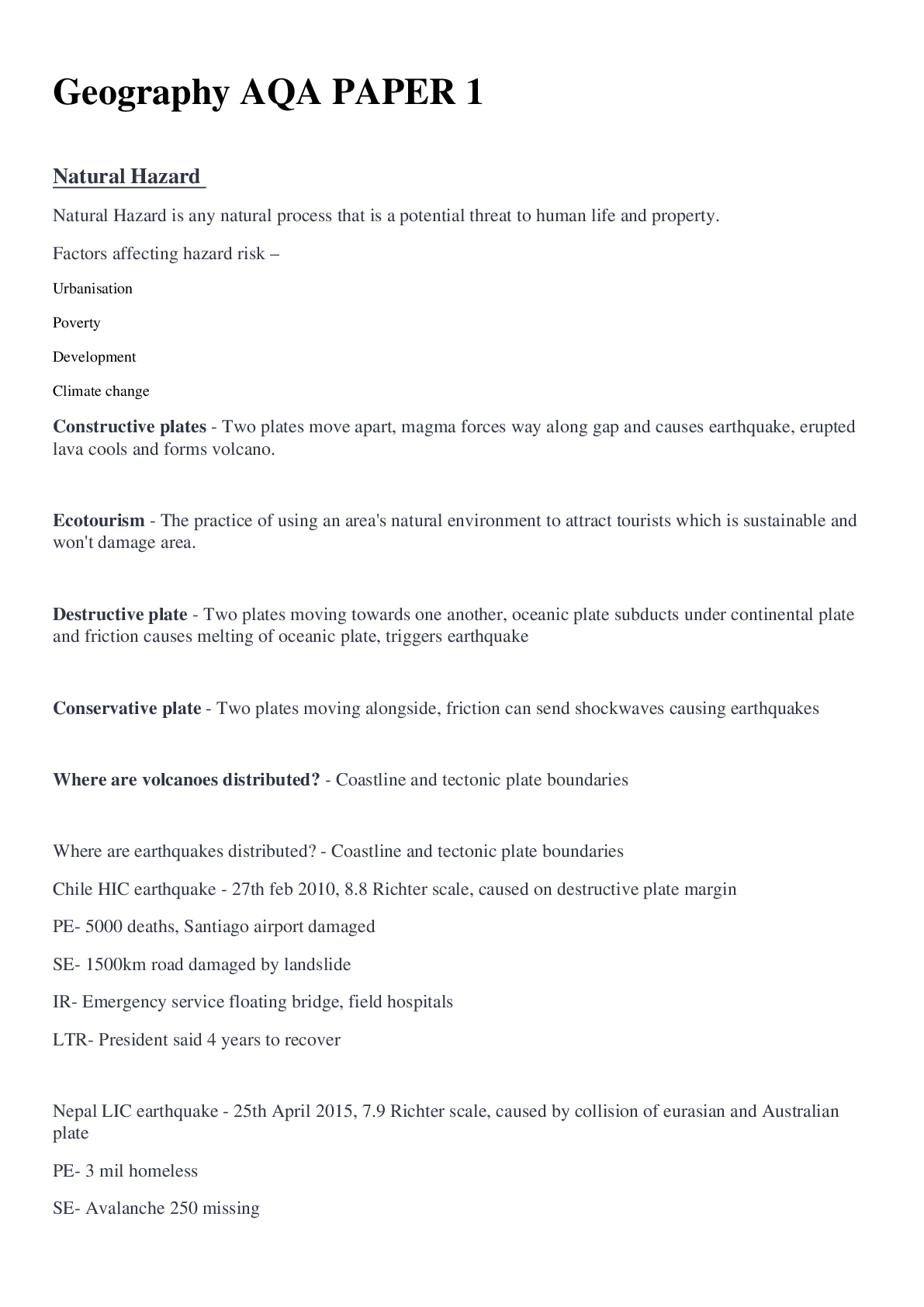


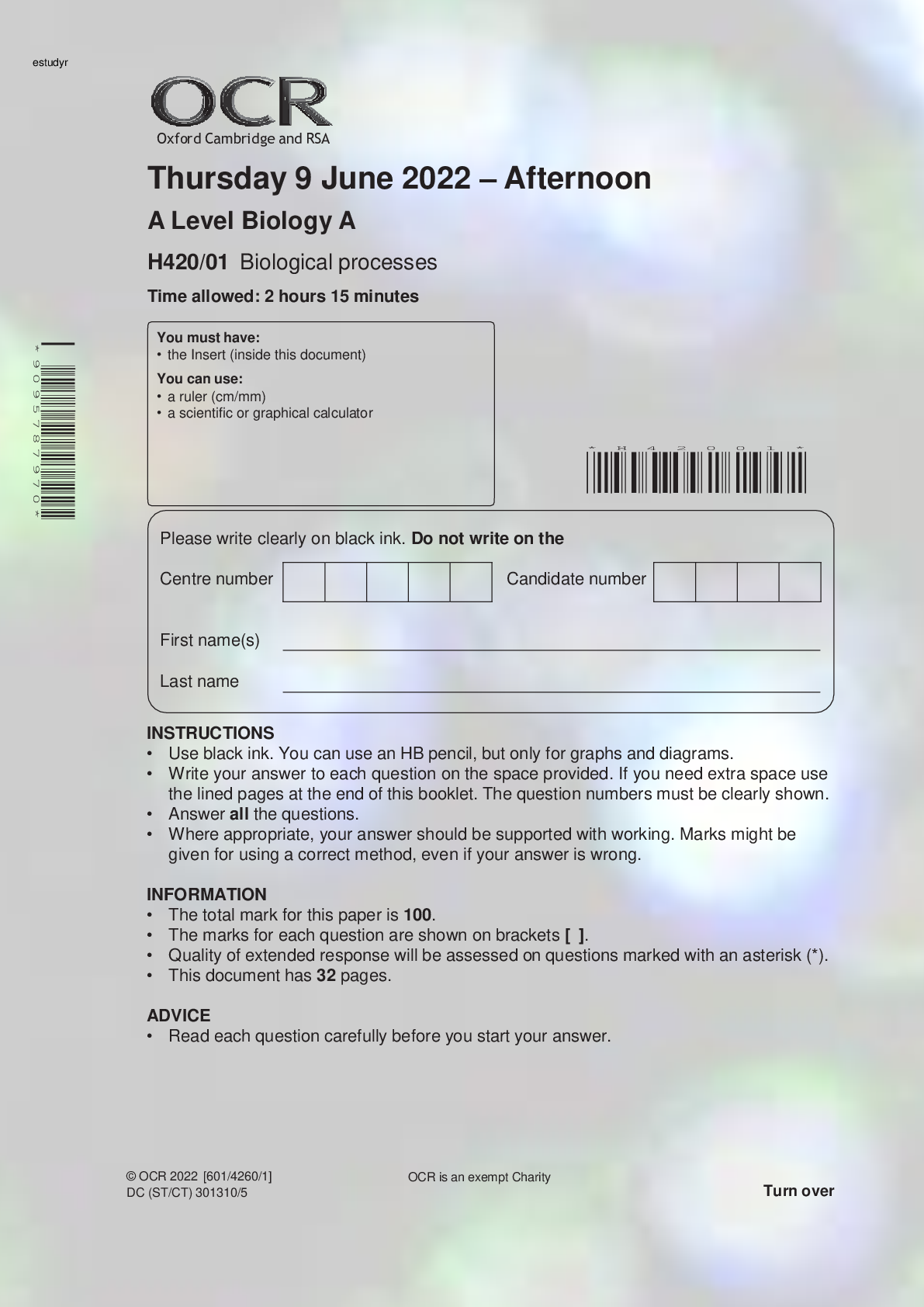
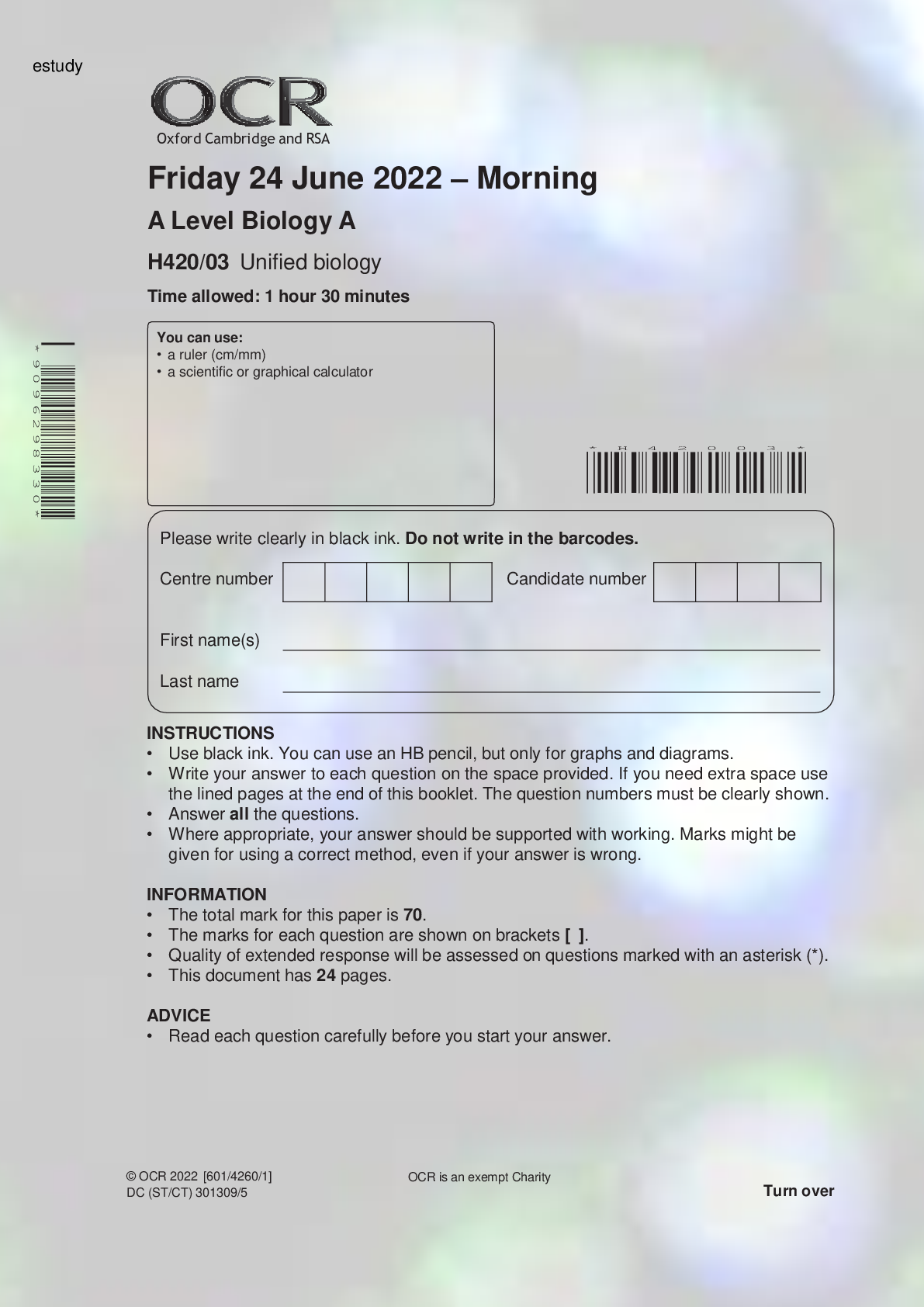
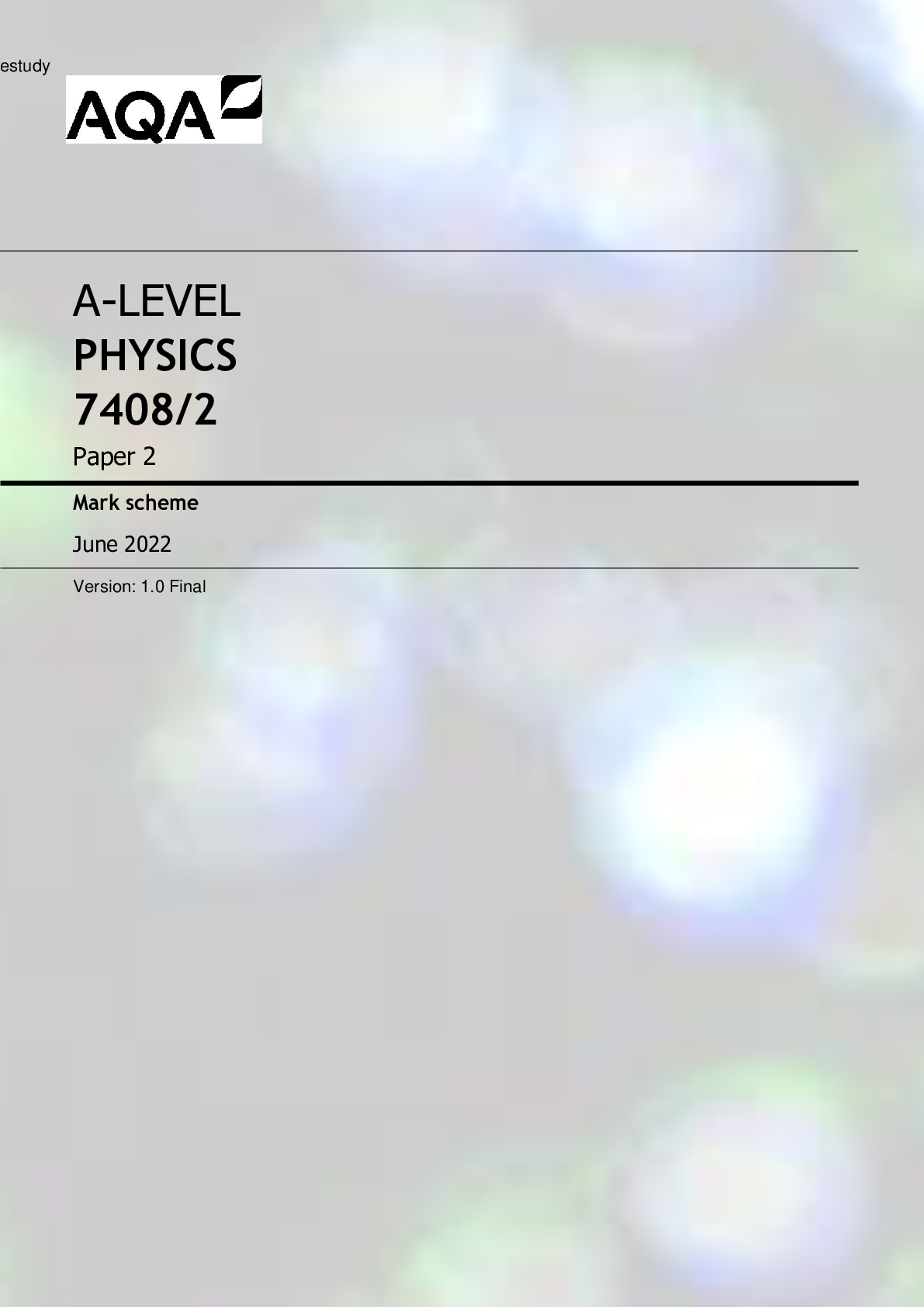
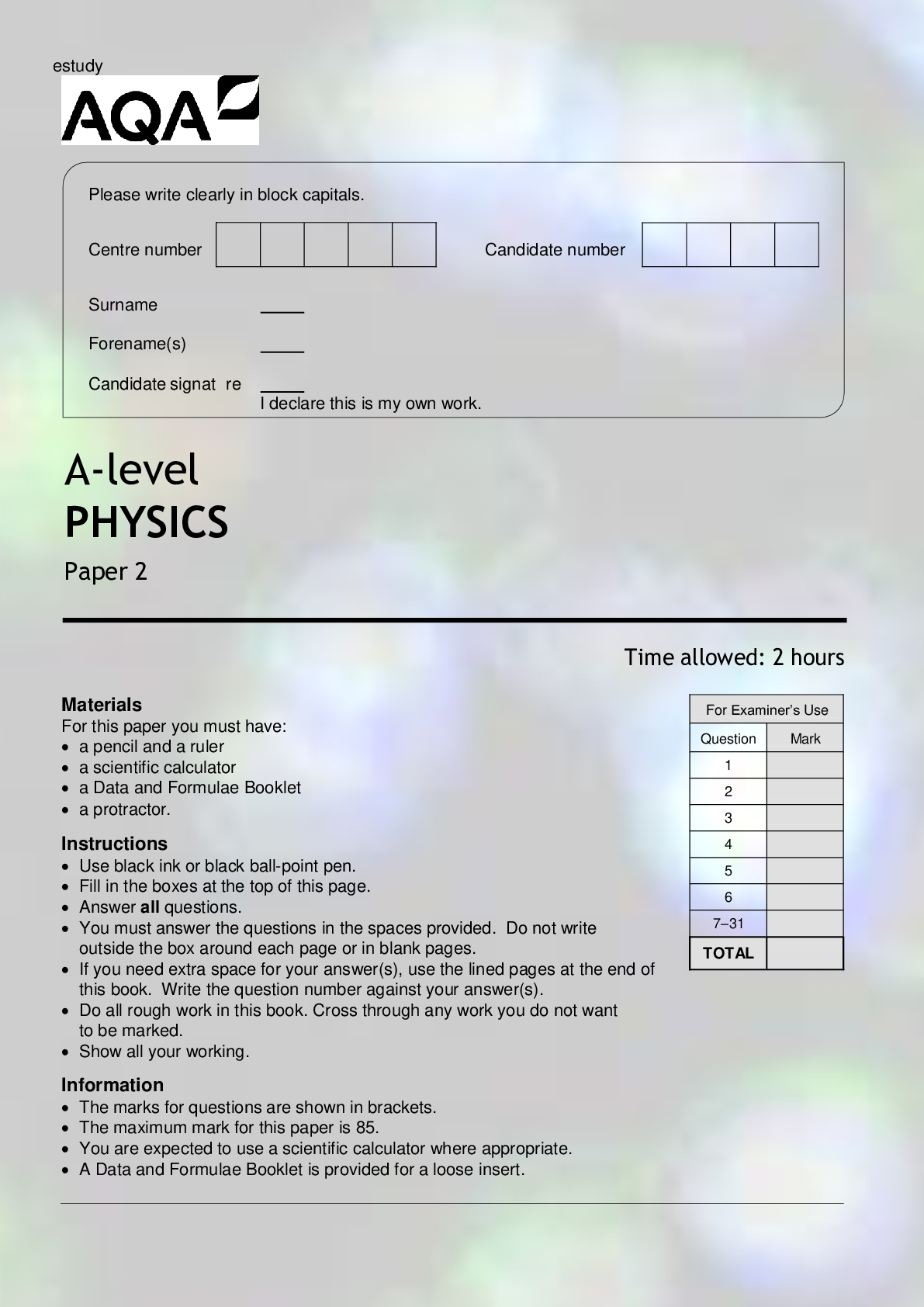
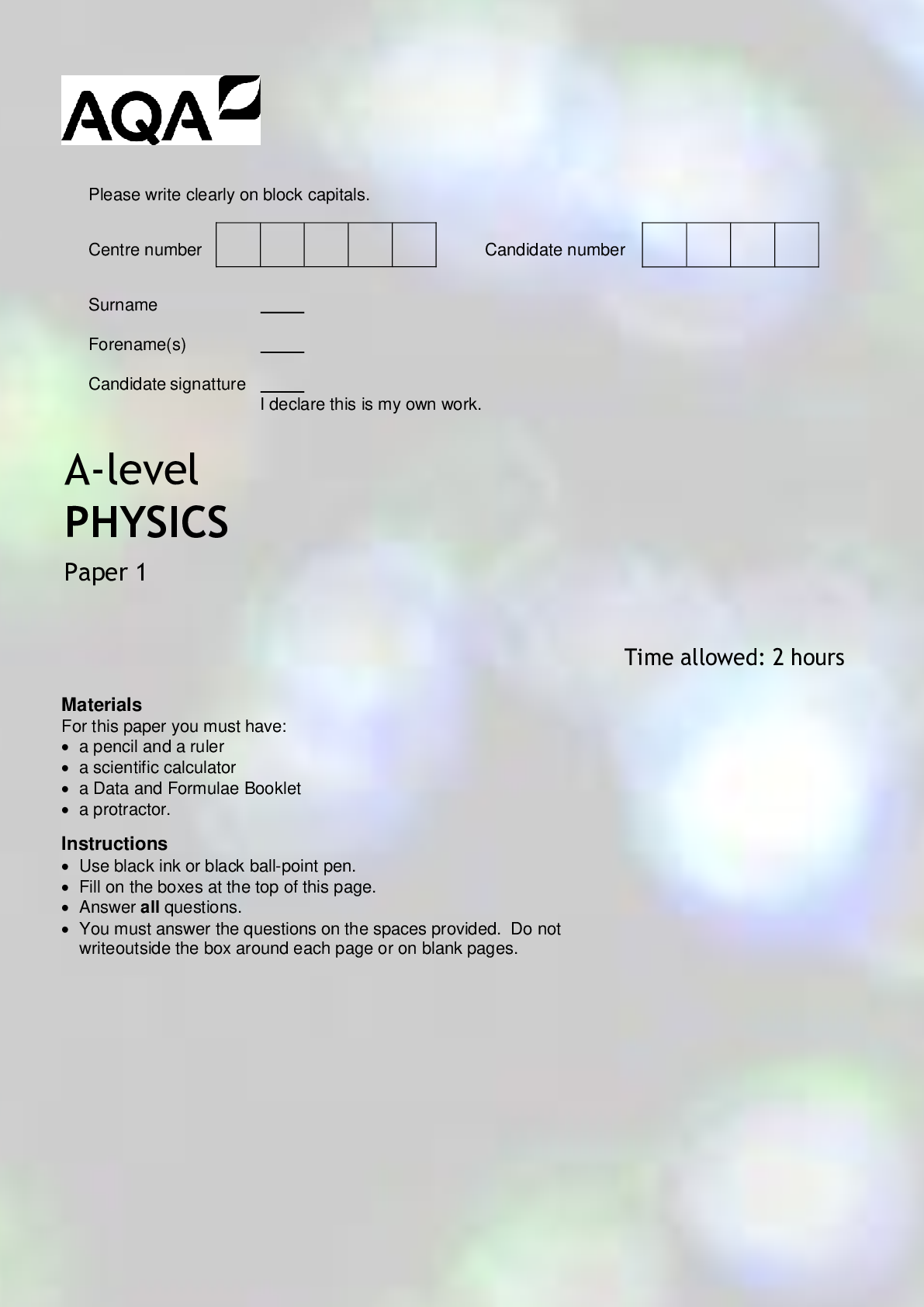
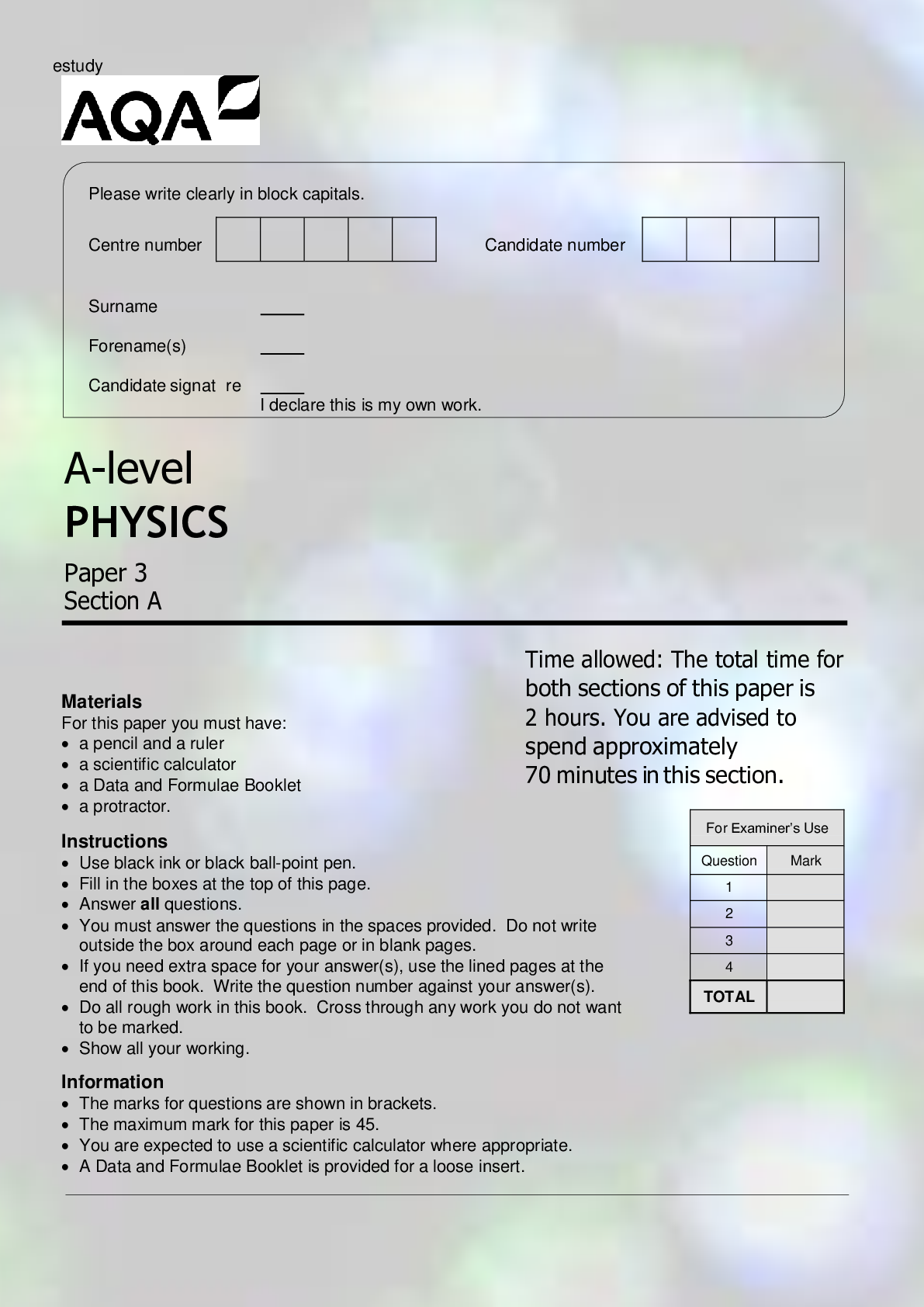
 - Paper 3 v1.png)
 - Paper 2.png)
 - Paper 1.png)

.png)
.png)

